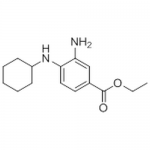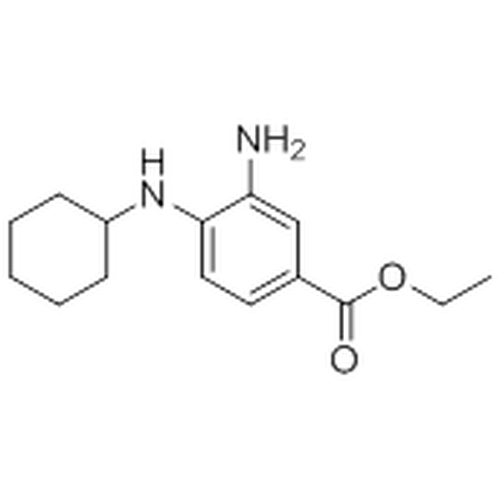| Product Name | Ferrostatin-1 |
| Description |
Ferroptosis Inhibitor |
| Purity | >98% (TLC); NMR (Conforms) |
| CAS No. | 347174-05-4 |
| Molecular Formula | C15H22N2O2 |
| Molecular Weight | 262.4 |
| Field of Use | Not for use in humans. Not for use in diagnostics or therapeutics. For in vitro research use only. |
Properties
| Storage Temperature | -20ºC |
| Shipping Temperature | Shipped Ambient |
| Product Type | Inhibitor |
| Solubility | Soluble in DMSO (100 mg/ml) or ethanol (100 mg/ml) |
| Source | Synthetic |
| Appearance | Tan powder |
| SMILES | CCOC(=O)c1ccc(c(c1)N)NC2CCCCC2 |
| Safety Phrases |
Classification: Skin irritation (Category 2), H315 Safety Phrases: S22 - Do not breathe dust. S24/25 - Avoid contact with skin and eyes. S36/37/39 - Wear suitable protective clothing, gloves and eye/face protection. Hazard statements: H315 Causes skin irritation. H319 Causes serious eye irritation. Precautionary statements: P260 Do not breathe dust/fume/gas/mist/vapours/spray P264 Wash skin thoroughly after handling. P280 Wear protective gloves. P302 + P352 IF ON SKIN: Wash with plenty of soap and water. P304 + 340 If INHALED: Remove victim to fresh air and keep at rest in a position comfortable for breathing P305 + 351+ + 338 IF IN EYES: Rinse continuously with water for several minutes. Remove contact lenses if present and easy to do so- continue rinsing. P333 + 313 If skin irritation or a rash occurs: Get medical advice/attention |
| Cite This Product | Ferrostatin-1 (StressMarq Biosciences Inc., Victoria BC CANADA, Catalog # SIH-525) |
Biological Description
| Alternative Names | Ethyl 3-amino-4-(cyclohexylamino)benzoate |
| Research Areas | Apoptosis, Cancer, Cell Signaling, Neuroscience |
| Scientific Background | Ferrostatin-1 inhibits ferroptosis (EC50=60 nM), an iron-dependent form of nonapoptotic cell death. It is especially potent of ferroptosis in cancer cells and glutamate-induced cell death in organotypic rat brain slices (1). It also blocks the cytotoxic effects of sorafenib in hepatocellular carcinoma cells (2), and inhibits oxidative lipid damage and cell death in diverse disease models (3). |
| References |
1. Dixon S.J., et al. (2012) Cell. 149: 1060. 2. Louandre C., et al. (2013) Int. J. Cancer. 133: 1732. 3. Skouta R., et al. (2014) J. Am. Chem. Soc. 136: 4551. |



Reviews
There are no reviews yet.